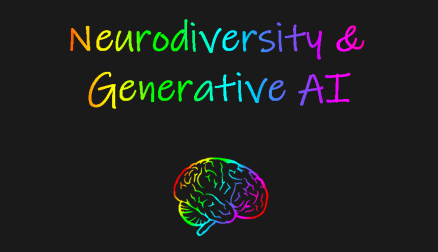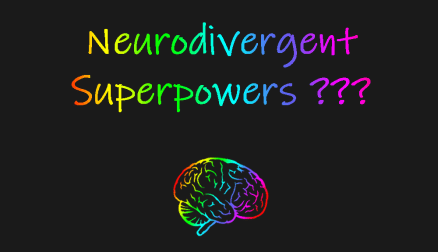Could Generative AI be used to assist those who have executive functioning issues? By adding personalized data and tracking ongoing conversations Generative AI may offer an ongoing level of support to the neurodivergent community.
Like many I’ve been looking into Generative IA (GenAI) and what practical uses the technology offers today. Particularly from a business lens. If you’re not familiar with the term Generative AI you may be familiar with some popular applications that use it. The primary technology being used to drive Generative AI are Large Language Models (LLMs). This is the technology behind tools like ChatGPT and Midjourney.
As I’m diving into the current state of LLMs, I’m intrigued by the solutions emerging by hacking the tools and enhancing the models. There are countless articles that talk about how to get more accurate results from tools like ChatGPT. Essentially warming them up to fine tune the results. These are strategies designed to get around the fact that the current models have low accuracy rates (GPT 3 ~60%) and are known to make up content. While the next generation of LLMs are reporting significantly higher accuracy rates, this is still an emerging technology.
New solutions being released use similar strategies to provide a level of customization and specialized accuracy on top of pre-built LLMs. For example, Amazon Bedrock allows you to add your own data to a foundational model (a LLM) to customize and refine the results. With the accessibility of customization solutions I’m seeing new uses for GenAI and LLMs that go beyond the novelty in the current tools. One of the areas I’ve been exploring is personalization in the eCommerce space. Without diving deeper into eCommerce, my ideations have spawned an offshoot. Digital assistants to provide on going context as a support mechanism.
Like many other autistic and neurodivergent folks I struggle with executive functioning. At it’s simplest executive functioning is the ability to plan, meet goals, and generally stay focused. The following two statements are common for me to say. “Yes I remember that conversation we had in the airport 20 years ago.” And, “no I can’t repeat what I said two minutes ago.” I don’t know how many times a day I walk into a room and forget why I’m there. Or sit down at the computer with a solid purpose and then can’t remember what it was.
GenAI can’t read my mind, yet it may be able to prompt me with possibilities. The options presented would be based on how it tracks my personal context. More importantly it may be able to present me with what I should be doing. Prioritization is another executive function NDs struggle with. If trained on the proper context could GenAI help me determine what I should be doing? Could it help me breakdown what I need to get done into logical tasks and next steps? Can Generative AI become the ride-along coach that helps me navigate a neurotypical world? I don’t know if this will be possible, yet I’m keeping an eye on where it goes.
I’m still cautious of the current tools out there. I’ve been using them for research, but only in areas where I have a solid knowledge base. I always validate the results they give me. I essentially use them to generate basic text I can modify in order to save time. I still use regular internet searches for new topics. I want to know what the sources of information are so I can determine how much I trust them. The current set of tools can be prompted to provide resources, but even then they can invent sources that don’t exist.
This is a space that’s evolving quickly. Some would say too quickly. As I’m working on business use-cases that use GenAI and LLMs, I’ll continue exploring how they can safely be used as ND assistants. No one really knows where it’s going, and it’s worth keeping an eye on. We could see some tangible progress over the next year or two that surprises (and hopefully delights) us all.
Disclosure: I’m a Solution Architect at Amazon Web Services (AWS). This post is not associated with or endorsed by AWS. The opinions and content are purely my own.





